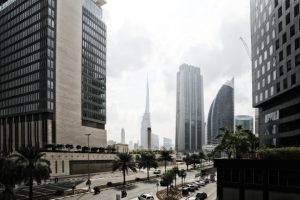Is Bay Area Real Estate in a Bubble?


The real estate market in the San Francisco Bay Area is not in a bubble. It represents one of the best values in the country. While many other parts of the country saw massive price increases during the housing pandemic, the San Francisco Bay Area saw modest gains. Rents were down in many city areas, though they climbed on the west side. During the same period, the NASDAQ gained more than 40%. More residents are now more prosperous than ever, investing those gains into real estate.
San Francisco
In recent years, the San Francisco real estate market has been recovering. Rising rents and low-interest rates have fueled a rising buyer demand and limited supply. However, these factors have not caused the city to experience a full-blown housing bubble. In 2011, San Francisco began to show signs of a recovery. The economy started to improve, and affluent neighborhoods became more popular with new high-tech workers. As a result, price appreciation soared across the entire city.
Some housing experts believe that the housing bubble in the Bay Area will burst by 2022. The combination of high prices and relaxed lending standards is not sustainable and could severely affect the economy. Currently, the median home price in San Francisco is over $1.3 million. Prices in other parts of the Bay Area are not much better.
Los Angeles
If you are considering buying a home in the Bay Area or Los Angeles, you may want to know if the prices are rising too fast. The two regions have seen a burgeoning housing market, but many would-be buyers are priced out. A number of real estate agents believe that home values are tapering off after years of steady increases.
Home prices are usually linked to income and employment. So, if the economy is improving, home prices should follow suit. However, it’s important to note that home prices can’t necessarily drop significantly. Overvaluation can be sustained by a number of factors, including a large income growth or a steep increase in rent. A long period of little or no appreciation can also help to burst a bubble.
San Diego
The bubble is a term that is used to describe a market that has gone through a dramatic increase in price without any underlying economic reason. The underlying causes of bubbles include irrational exuberance, runaway greed, and criminal behavior. Examples of bubbles include junk bonds, stock market hysteria, and going overboard on debt. Each bubble is just waiting for the right event to pop it. The unfortunate part is that human beings have not figured out how to learn from previous bubble cycles. Thankfully, Bill Murray has gained wisdom over the years.
However, many experts are concerned about the housing market in the Bay Area. In recent years, property values have skyrocketed, and some have even worried that a housing bubble is forming. Although experts disagree, they agree that a housing bubble is when the prices of homes rise rapidly and suddenly drop. This is risky for anyone, as it can cause massive losses and even a recession.
San Mateo
If you’re wondering if San Mateo real estate is in a bubble, consider the San Mateo County Association of Realtors data. This data shows the average number of homes for sale, the median price, and the number of homes that sold over their asking price. However, while these numbers don’t guarantee that the market is in a bubble, they indicate some trends worth watching.
A housing bubble occurs when housing prices outstrip incomes. This can lead to a recession. Although San Mateo real estate is still very hot, interest rates have risen, making it more expensive to buy a home. This could cause some buyers to wait until interest rates go down before purchasing a home.
Northern California
While the housing market in Northern California is still hot, there are signs that the bubble may be popping. Home prices are up, and demand remains high, though consumers are holding off on buying because of rising interest rates. If you’re in the market for a home, it’s important to move quickly. If you’re not, interest rates could rise even higher, resulting in a deteriorating market.
Historically, major real estate downturns in Northern California have been linked to larger national or international economic crises. As a result, they may be smaller and less dramatic than the national downturn. Furthermore, these downturns often follow a larger trend, like the 1989 earthquake, which exacerbated the national recession. In addition, homes in the more expensive communities have surged past their previous peaks.
